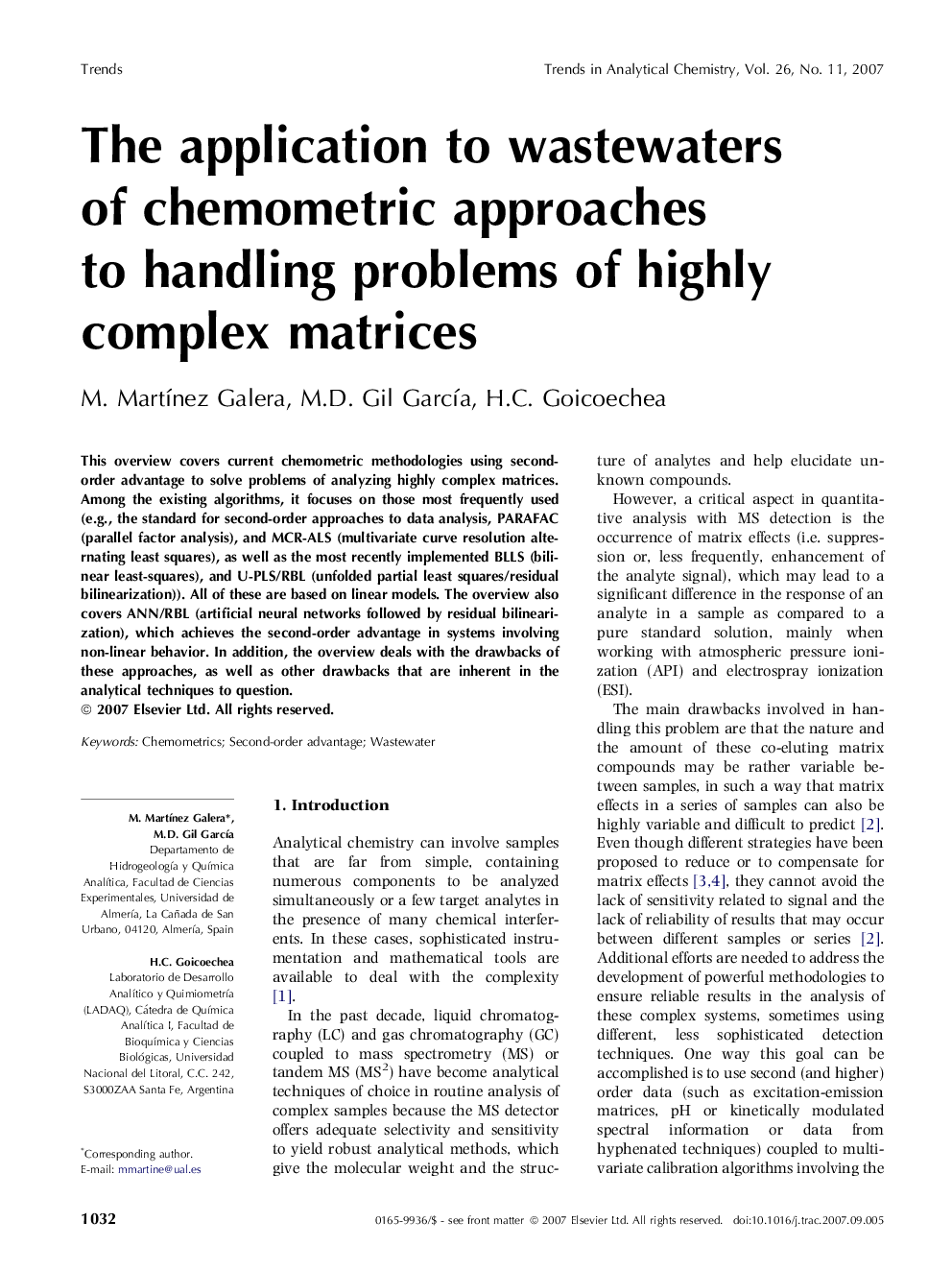| Article ID | Journal | Published Year | Pages | File Type |
|---|---|---|---|---|
| 1248783 | TrAC Trends in Analytical Chemistry | 2007 | 11 Pages |
This overview covers current chemometric methodologies using second-order advantage to solve problems of analyzing highly complex matrices. Among the existing algorithms, it focuses on those most frequently used (e.g., the standard for second-order approaches to data analysis, PARAFAC (parallel factor analysis), and MCR-ALS (multivariate curve resolution alternating least squares), as well as the most recently implemented BLLS (bilinear least-squares), and U-PLS/RBL (unfolded partial least squares/residual bilinearization)). All of these are based on linear models. The overview also covers ANN/RBL (artificial neural networks followed by residual bilinearization), which achieves the second-order advantage in systems involving non-linear behavior. In addition, the overview deals with the drawbacks of these approaches, as well as other drawbacks that are inherent in the analytical techniques to question.
